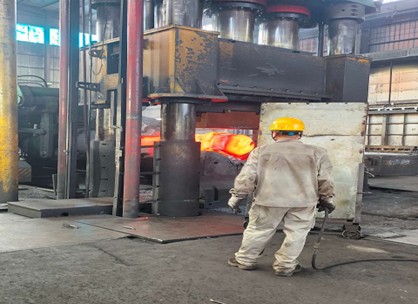The composition of open forging process mainly includes three categories: basic process, auxiliary process, and finishing process.
I. Basic process
Forging: to produce forgings such as impellers, gears, and disks by reducing the length of the ingot or billet and increasing its cross-section.
Pulling (or stretching): Producing shafts, forgings, etc. by reducing the cross-section of the billet and increasing its length.
Punching: Punching full or semi through holes on the blank.
Bending: Bend each part of the billet along the axis to various angles according to the requirements of the workpiece.
Cutting: Cut the billet into several parts, such as cutting off the riser of the steel ingot and the remaining material at the inner bottom.
Misalignment: The relative displacement of one part of the billet to another, with the axis lines still parallel to each other, is commonly used in the production of crankshafts.
Twist: To rotate one part of the billet around the same axis as another at a certain angle, often used in the production of crankshaft shafts.
Forging: Forging two pieces of raw material into a single piece.
II. Auxiliary process
The auxiliary process is a process that causes a certain deformation of the billet in advance to complete the basic process. These processes include:
Pressing jaw: used to fix the billet for subsequent processing.
Chamfering: Chamfering the edges of the billet to prevent stress concentration during subsequent processing.
Indentation: Pressing specific marks on the blank as a reference or positioning mark for subsequent processing.
III. Repair process
The trimming process is used to refine the size and shape of forgings, eliminate surface unevenness, distortion, etc., and fully meet the requirements of forging drawings. These processes include:
Correction: Correct the shape and size of forgings to meet design requirements.
Rounding: Performing rounding treatment on cylindrical or approximately cylindrical forgings to make their surfaces smoother and more regular.
Flattening: Flatten the surface of the forging to eliminate unevenness.
As mentioned above, the composition of the open forging process covers the entire process from billet preparation to final forging formation. By selecting and combining these processes reasonably, forging products that meet the requirements can be produced.
Post time: Oct-10-2024





